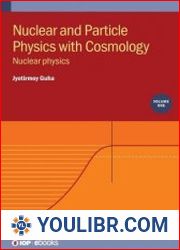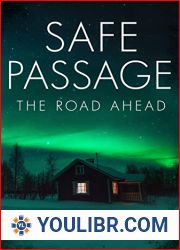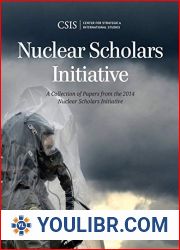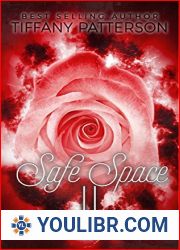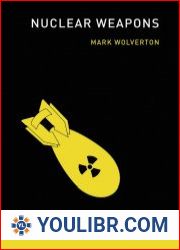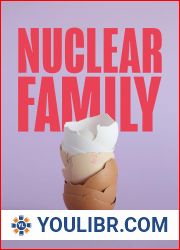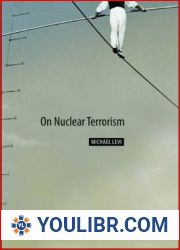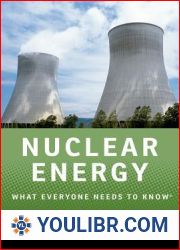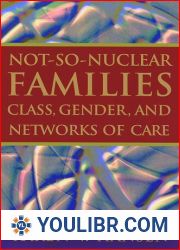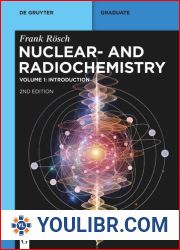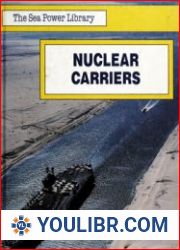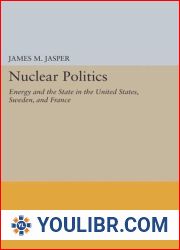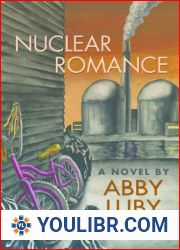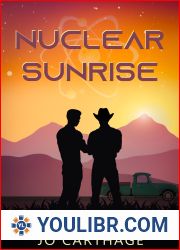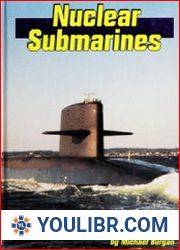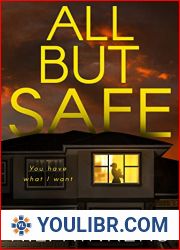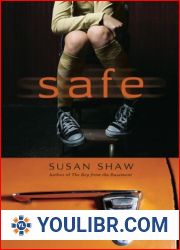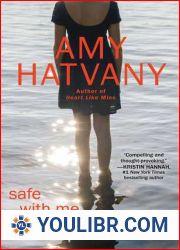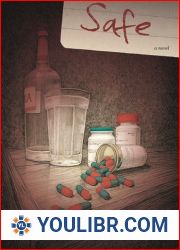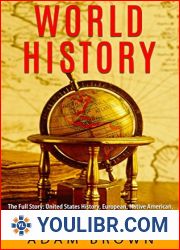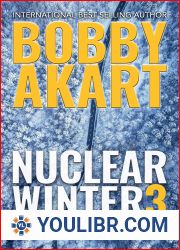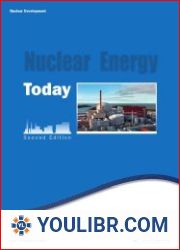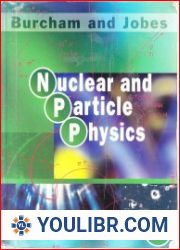
BOOKS - Safe Enough?: A History of Nuclear Power and Accident Risk

Safe Enough?: A History of Nuclear Power and Accident Risk
Author: Thomas R. Wellock
Year: March 23, 2021
Format: PDF
File size: PDF 64 MB
Language: English

Year: March 23, 2021
Format: PDF
File size: PDF 64 MB
Language: English

Safe Enough: A History of Nuclear Power and Accident Risk Since the dawn of the Atomic Age, nuclear experts have labored to imagine the unimaginable and prevent it. They confronted a deceptively simple question: When is a reactor safe enough to adequately protect the public from catastrophe? Some experts sought a deceptively simple estimate that the odds of a major accident were literally a million to one. However, this search to quantify accident risk proved to be a tremendously complex and controversial endeavor, one that altered the very notion of safety in nuclear power and beyond. Safe Enough is the first history to trace these contentious efforts, following the Atomic Energy Commission and the Nuclear Regulatory Commission as their experts experimented with tools to quantify accident risk for use in regulation and to persuade the public of nuclear power's safety. The intense conflict over the value of risk assessment offers a window on the history of the nuclear safety debate and the beliefs of its advocates and opponents. Across seven decades and the accidents at Three Mile Island, Chernobyl, and Fukushima, the quantification of risk has transformed both society's understanding of the hazards posed by complex technologies and what it takes to make them safe enough. The book begins with the early days of nuclear power, when the industry was still in its infancy and the risks associated with it were not yet fully understood. As the technology evolved, so did the need to understand and mitigate those risks. The author explores how the development of nuclear power plants and the accompanying risk assessments have been shaped by a combination of scientific and political factors.
Safe Enough: A History of Nuclear Power and Accident Risk С самого начала атомного века ядерные эксперты трудились над тем, чтобы представить себе невообразимое и предотвратить его. Они столкнулись с обманчиво простым вопросом: когда реактор достаточно безопасен, чтобы адекватно защитить население от катастрофы? Некоторые эксперты искали обманчиво простую оценку того, что шансы крупной аварии были буквально миллион к одному. Тем не менее, этот поиск для количественной оценки риска аварии оказался чрезвычайно сложной и противоречивой попыткой, которая изменила само понятие безопасности в ядерной энергетике и за ее пределами. Safe Enough - это первая история, в которой прослеживаются эти спорные усилия после Комиссии по атомной энергии и Комиссии по ядерному регулированию, когда их эксперты экспериментировали с инструментами для количественной оценки риска аварий для использования в регулировании и для убеждения общественности в безопасности ядерной энергетики. Интенсивный конфликт по поводу ценности оценки рисков открывает окно в историю дебатов по ядерной безопасности и убеждений ее сторонников и противников. За семь десятилетий и аварий на острове Три-Майл, в Чернобыле и Фукусиме количественная оценка риска изменила как понимание обществом опасностей, связанных со сложными технологиями, так и то, что необходимо для того, чтобы сделать их достаточно безопасными. Книга начинается с первых дней атомной энергетики, когда отрасль еще находилась в зачаточном состоянии и связанные с ней риски еще не были до конца поняты. По мере развития технологии росла и необходимость понимать и смягчать эти риски. Автор исследует, как развитие атомных электростанций и сопутствующие оценки рисков были сформированы сочетанием научных и политических факторов.
Safe Enough : A History of Nuclear Power and Accent Risk Depuis le début de l'âge atomique, les experts nucléaires ont travaillé pour imaginer l'inimaginable et l'empêcher. Ils se sont heurtés à une simple question : quand le réacteur est-il suffisamment sûr pour protéger adéquatement la population d'une catastrophe ? Certains experts cherchaient à évaluer de manière trompeuse et simple que les chances d'un accident majeur étaient littéralement un million. Néanmoins, cette recherche pour quantifier le risque d'accident s'est avérée être une tentative extrêmement complexe et contradictoire qui a changé la notion même de sûreté dans l'énergie nucléaire et au-delà. Safe Enough est la première histoire à retracer ces efforts controversés depuis la Commission de l'énergie atomique et la Commission de réglementation nucléaire, lorsque leurs experts ont expérimenté des outils permettant de quantifier les risques d'accidents à utiliser dans la réglementation et de convaincre le public de la sûreté de l'énergie nucléaire. Un conflit intense sur la valeur de l'évaluation des risques ouvre une fenêtre sur l'histoire du débat sur la sécurité nucléaire et sur les convictions de ses partisans et de ses adversaires. Au cours des sept décennies et des accidents survenus sur l'île de Tri Mile, à Tchernobyl et à Fukushima, l'évaluation quantitative des risques a changé à la fois la compréhension par la société des dangers liés aux technologies complexes et ce qui est nécessaire pour les rendre suffisamment sûres. livre commence par les premiers jours de l'énergie nucléaire, lorsque l'industrie était encore à ses débuts et que les risques associés n'étaient pas encore pleinement compris. Au fur et à mesure que la technologie évoluait, il devenait nécessaire de comprendre et d'atténuer ces risques. L'auteur étudie comment le développement des centrales nucléaires et les évaluations des risques connexes ont été formés par une combinaison de facteurs scientifiques et politiques.
Safe Enough: A History of Nuclear Power and Accident Risk Desde el comienzo de la era atómica, los expertos nucleares han trabajado para imaginar lo inimaginable y prevenirlo. Se enfrentaron a una pregunta engamente simple: Cuándo es el reactor lo suficientemente seguro para proteger adecuadamente a la población de una catástrofe? Algunos expertos buscaron una estimación engamente simple de que las probabilidades de un accidente mayor eran literalmente de un millón a uno. n embargo, esta búsqueda para cuantificar el riesgo de accidente resultó ser un intento extremadamente complejo y contradictorio que cambió la noción misma de seguridad dentro y fuera de la energía nuclear. Safe Enough es la primera historia que traza estos polémicos esfuerzos desde la Comisión de Energía Atómica y la Comisión Reguladora Nuclear, cuando sus expertos experimentaron con herramientas para cuantificar el riesgo de accidentes para su uso en la regulación y para convencer al público de la seguridad de la energía nuclear. intenso conflicto sobre el valor de la evaluación de riesgos abre una ventana a la historia del debate sobre seguridad nuclear y las creencias de sus partidarios y adversarios. En siete décadas y los accidentes en Three Mile Island, Chernóbil y Fukushima, la cuantificación del riesgo ha cambiado tanto la comprensión de la sociedad de los peligros asociados a las tecnologías sofisticadas como lo necesario para hacerlas lo suficientemente seguras. libro comienza con los primeros días de la energía nuclear, cuando la industria aún estaba en su infancia y los riesgos asociados a ella aún no se entendían del todo. A medida que la tecnología avanzó, también creció la necesidad de comprender y mitigar estos riesgos. autor explora cómo el desarrollo de las centrales nucleares y las evaluaciones de riesgos asociadas se han formado por una combinación de factores científicos y políticos.
Safe Enough: A History of Nucleare Power and Accent Risk n dall'inizio dell'era atomica, gli esperti nucleari hanno lavorato per immaginare l'inimmaginabile e prevenirlo. Hanno affrontato una domanda ingannevolmente semplice: quando un reattore è abbastanza sicuro da proteggere adeguatamente la popolazione da un disastro? Alcuni esperti hanno cercato una semplice valutazione ingannevole del fatto che le probabilità di un incidente importante erano letteralmente un milione a uno. Tuttavia, questa ricerca per quantificare il rischio di un incidente si è rivelata un tentativo estremamente complesso e contraddittorio, che ha cambiato il concetto stesso di sicurezza nell'energia nucleare e oltre. Safe Enough è la prima storia che mostra questi sforzi controversi dopo la Commissione per l'Energia Atomica e la Commissione per la Regolazione Nucleare, quando i loro esperti hanno sperimentato strumenti per quantificare il rischio di incidenti da utilizzare nella regolamentazione e per convincere il pubblico sulla sicurezza dell'energia nucleare. L'intenso conflitto sul valore della valutazione dei rischi apre una finestra sulla storia del dibattito sulla sicurezza nucleare e sulle convinzioni dei suoi sostenitori e dei suoi oppositori. Nel corso di sette decenni e incidenti nell'isola di Tree Mile, a Chernobyl e Fukushima, la quantificazione del rischio ha cambiato sia la consapevolezza della società dei pericoli legati alla tecnologia complessa, sia ciò che è necessario per renderli abbastanza sicuri. Il libro inizia con i primi giorni dell'energia nucleare, quando il settore era ancora in fase di sviluppo e i rischi associati non erano ancora pienamente compresi. Con l'evoluzione della tecnologia, la necessità di comprendere e mitigare questi rischi è cresciuta. L'autore sta esplorando come lo sviluppo delle centrali nucleari e le valutazioni dei rischi correlate siano stati formati da una combinazione di fattori scientifici e politici.
cher genug: Eine Geschichte der Atomkraft und des Unfallrisikos Seit Beginn des Atomzeitalters arbeiten Atomexperten daran, sich das Unvorstellbare vorzustellen und es zu verhindern. e standen vor einer trügerisch einfachen Frage: Wann ist ein Reaktor sicher genug, um die Bevölkerung ausreichend vor einer Katastrophe zu schützen? Einige Experten suchten die täuschend einfache Einschätzung, dass die Chancen für einen schweren Unfall buchstäblich eine Million zu eins waren. Diese Suche nach einer Quantifizierung des Unfallrisikos hat sich jedoch als äußerst komplexer und kontroverser Versuch erwiesen, der das Konzept der cherheit in der Kernenergie und darüber hinaus verändert hat. Safe Enough ist die erste Geschichte, die diese umstrittenen Bemühungen nach der Atomenergiekommission und der Nuclear Regulatory Commission nachzeichnet, als ihre Experten mit Werkzeugen experimentierten, um das Unfallrisiko für den Einsatz in der Regulierung zu quantifizieren und die Öffentlichkeit von der cherheit der Kernenergie zu überzeugen. Der intensive Konflikt um den Wert der Risikobewertung öffnet ein Fenster in die Geschichte der nuklearen cherheitsdebatte und die Überzeugungen ihrer Befürworter und Gegner. In den sieben Jahrzehnten und den Unfällen auf Three Mile Island, Tschernobyl und Fukushima hat die Quantifizierung des Risikos sowohl das Verständnis der Gesellschaft für die Gefahren, die mit komplexen Technologien verbunden sind, als auch für das, was notwendig ist, um sie ausreichend sicher zu machen, verändert. Das Buch beginnt mit den Anfängen der Kernenergie, als die Branche noch in den Kinderschuhen steckte und die damit verbundenen Risiken noch nicht vollständig verstanden waren. Mit der Entwicklung der Technologie wuchs auch die Notwendigkeit, diese Risiken zu verstehen und zu mindern. Der Autor untersucht, wie die Entwicklung von Kernkraftwerken und die damit einhergehenden Risikobewertungen durch eine Kombination wissenschaftlicher und politischer Faktoren geprägt wurden.
''
Safe Enough: A History of Nuclear Power and Accident Risk (Yeterince Güvenli: Nükleer Enerji ve Kaza Riskinin Tarihi) Atom çağının başlangıcından bu yana, nükleer uzmanlar hayal edilemez olanı hayal etmek ve önlemek için çalıştılar. Aldatıcı derecede basit bir soruyla karşı karşıya kaldılar: Reaktör ne zaman halkı felaketten yeterince koruyacak kadar güvenli? Bazı uzmanlar, büyük bir kaza olasılığının kelimenin tam anlamıyla milyonda bir olduğuna dair aldatıcı bir şekilde basit bir tahmin arıyorlardı. Bununla birlikte, bir kaza riskini ölçmek için yapılan bu araştırma, nükleer enerji ve ötesinde güvenlik kavramını değiştiren son derece karmaşık ve tartışmalı bir çaba olduğunu kanıtladı. Yeterince Güvenli, Atom Enerjisi Komisyonu ve Nükleer Düzenleme Komisyonu'ndan bu yana bu tartışmalı çabaları izleyen ilk hikayedir; uzmanları, düzenlemede kullanım için kaza riskini ölçmek ve halkı nükleer enerjinin güvenliği konusunda ikna etmek için araçlar denedi. Risk değerlendirmesinin değeri konusundaki yoğun çatışma, nükleer güvenlik tartışmasının tarihine ve savunucularının ve düşmanlarının inançlarına bir pencere sunmaktadır. Yetmiş yıldan fazla bir süredir Three Mile Island, Çernobil ve Fukushima'daki kazalar, riski ölçmek hem toplumun karmaşık teknolojilerin tehlikeleri hakkındaki anlayışını hem de onları yeterince güvenli hale getirmek için neyin gerekli olduğunu değiştirdi. Kitap, nükleer enerjinin ilk günlerinde, endüstri henüz emekleme aşamasındayken ve bununla ilgili riskler henüz tam olarak anlaşılmamışken başlıyor. Teknoloji geliştikçe, bu riskleri anlama ve azaltma ihtiyacı da artmaktadır. Yazar, nükleer santrallerin ve ilgili risk değerlendirmelerinin gelişiminin bilimsel ve politik faktörlerin bir kombinasyonu tarafından nasıl şekillendirildiğini araştırıyor.
آمن بما فيه الكفاية: تاريخ الطاقة النووية ومخاطر الحوادث منذ بداية العصر الذري، عمل الخبراء النوويون على تخيل ما لا يمكن تصوره ومنعه. لقد واجهوا سؤالاً بسيطًا مخادعًا: متى يكون المفاعل آمنًا بما يكفي لحماية الجمهور بشكل كافٍ من الكارثة ؟ كان بعض الخبراء يبحثون عن تقدير بسيط مخادع بأن احتمالات وقوع حادث كبير كانت حرفياً مليون إلى واحد. ومع ذلك، أثبت هذا البحث لتحديد مخاطر وقوع حادث أنه جهد معقد للغاية ومثير للجدل غير مفهوم الأمان في الطاقة النووية وخارجها. Safe Enough هي القصة الأولى التي تتتبع هذه الجهود المثيرة للجدل منذ لجنة الطاقة الذرية ولجنة التنظيم النووي، عندما جرب خبراؤهم أدوات لتحديد مخاطر الحوادث لاستخدامها في التنظيم وإقناع الجمهور بسلامة الطاقة النووية. يوفر الصراع الشديد حول قيمة تقييم المخاطر نافذة على تاريخ النقاش حول الأمن النووي ومعتقدات مؤيديه وخصومه. على مدى سبعة عقود وحوادث في جزيرة ثري مايل وتشيرنوبيل وفوكوشيما، أدى تحديد المخاطر إلى تغيير فهم المجتمع لمخاطر التقنيات المعقدة وما هو مطلوب لجعلها آمنة بما فيه الكفاية. يبدأ الكتاب في الأيام الأولى للطاقة النووية، عندما كانت الصناعة لا تزال في مهدها ولم تكن المخاطر المرتبطة بها مفهومة تمامًا بعد. مع تطور التكنولوجيا، ظهرت الحاجة إلى فهم هذه المخاطر والتخفيف منها. يستكشف المؤلف كيف تم تشكيل تطوير محطات الطاقة النووية وتقييمات المخاطر المرتبطة بها من خلال مجموعة من العوامل العلمية والسياساتية.







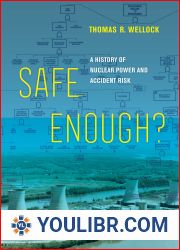
 49
49  3 TON
3 TON

